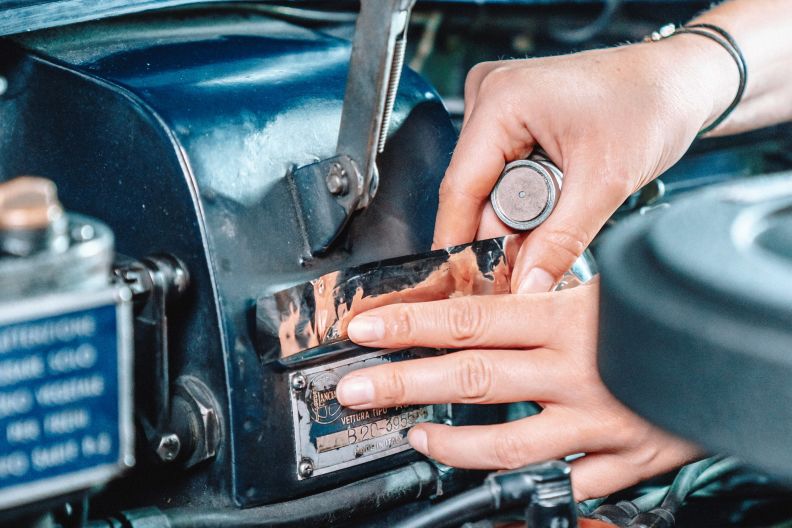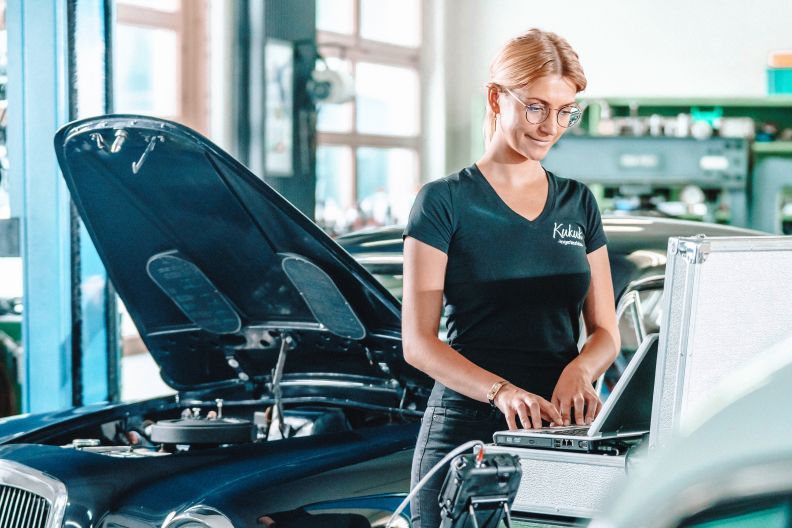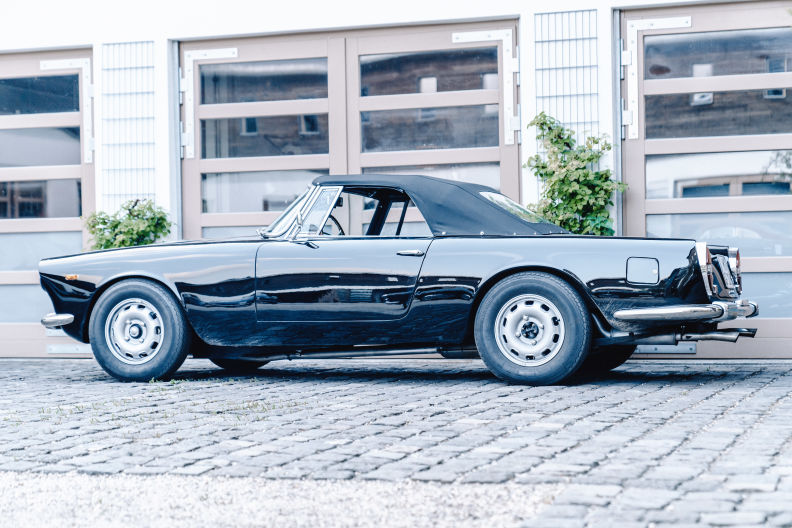Marqued Feature
Automotive CSI:
Authenticating the world's most important cars
https://marqued.com/editorial/Va7j5z0zRCNsHYF8ccwyV/automotive-csi-the-art-of-scientifically-authenticating-the-worlds-most
The interview was conducted in English and translated into German via Deepl.
We spoke to Bianca Leppert for Walter Magazine and gave her an insight into the classic car scene. It was a great pleasure for us and we are happy to share an excerpt with you here:
"May we introduce? Kukuk, Laura Kukuk. Hardly anyone knows the classic car scene as well as she does. The engineer's expertise is in demand internationally - including as a judge at competitions such as the Concorso d'Eleganza. But her favourite thing to do is to inspect automotive rarities all over the world for the family business she runs with her father.
"It's the stories of the cars and their owners that fascinate me," says Laura Kukuk. Anyone who has ever met the 29-year-old classic car expert immediately believes her. When she talks about her travels around the world, where she inspects rare pieces of jewellery, some worth millions, the passion in her voice resonates.
The favourite of all these stories? That of her father Klaus' dark red 1956 DKW 3=6. It shows how great the love for a vehicle can be. The previous owner had bought it new, but never had a driving licence himself. That's why he had his neighbour drive it every Sunday. "Every trip was documented by hand," says Laura. "Unfortunately, we never got to know this person, but it gave us a little insight into his life."
Laura Kukuk could have made a career as a vehicle technology engineer at McLaren Automotive. But it is precisely because of stories like this that she decides to join her father's family business in Overath near Cologne. The two take turns travelling all over the world.
Monday espresso on Lake Garda, Tuesday customer appointment in Frankfurt, Friday London. This is Laura Kukuk's daily routine. The automotive rarities, such as a Mercedes Gullwing or an Aston Martin DB4 GT Zagato, of which there are only 19 in existence, do not usually come to the workshop in Overath, but instead the engineer and all her equipment go to the owners. A service that the Kukuk's take for granted. In most cases, the aim is to prove the originality of a vehicle and then determine its value. "A while ago, for example, we looked at a Ferrari Daytona and carried out an elaborate authenticity check to verify the originality of the vehicle," says Laura. "We inspected the car in a typical Italian family business, where you could feel the passion - great car, passionate people. That's what our job is all about!"
She works primarily with scientific methods. Paint layer thickness measurement, an ultrasound for material measurement or spectroscopy to determine the material composition are just some of the methods she uses in her detective work. "In a Porsche 2.7 RS, for example, the sheet metal has a wall thickness of 0.88 millimetres," she says, "but only 0.8 millimetres in a lightweight construction. This difference of 0.08 millimetres would otherwise not be immediately noticeable." In other words, it takes meticulousness, a lot of knowledge about the historical background of a vehicle and skilled craftsmanship." - Text written by Bianca Leppert for Walter Magazine




Marqued : How would you describe your work? I know you called it scientific authentication, so can you tell us how you came to it, what is scientific authentication and what is involved in this whole world?
Laura : So scientific authentication is basically an additional approach to classical historical research. At the end of the day, of course, we do a comprehensive technical examination of the car in addition to our historical research. We are all into classic cars and that's what we live for, the history of the car. But then we go further: we check the quality of the car, of the parts we see in advance. And then we check and analyse whether they are original or not.
We investigate objectively and scientifically, because of course we all know that the classic car world is a very subjective world and history can be interpreted in different directions.
I mean, if you measure the thickness of paint on a car, it's black and white. There is no room to talk around it. You have a number and you know if it's a first-paint car or you know if it's a repaint or if there's a lot of filler underneath or something like that.
And it says a lot. Even just the bodywork under the sheet metal, whether it's in good condition or whether it's corroded. Then there are other approaches and other methods that we can use that have the same idea to get an objective result for that inspection.
The same is true for the condition of something, like the condition of the engine. When I look at an engine, yes, I can be an engine expert, and I can hear a lot of the engine, and I can feel the engine running, and I can smell the engine running. But at the end of the day, I will always have to open the engine to see the proper condition.
I have to look at the bearings, I have to look at the crankshaft and the camshaft, but there is a way to make it a bit easier. You can just do an oil analysis and send that oil sample to the lab and that tells you a lot. It tells you almost everything.
Marqued : Interesting.
Laura : We try to find methods that simplify things, that for example would not require you to take the whole engine apart to get a similar result. We try to be non-invasive and get as much information as possible about the condition, about the quality, about the originality, about everything, without damaging the car.
Basically, at the end of the day, you have a full "doctor's file" on a car. This is what my father has specialised in since he started the company in 1986. He has always tried to find new methods and new ways to bring in more information, to get more information about a car.
And these methods have evolved through technical evolution. 15 years ago, we had to use acids to analyse imprints on a car. For example, to analyse if it was a matching-number original car, you would have had to use acids if there was a questionable number. We are trying to translate and improve these methods by making them non-destructive, non-invasive and also by keeping up to date with the latest technology. We can do this for any make, any model.
Of course we have to do our research. We have to research this particular car. We have to talk to our network of historians, to the manufacturer, for example to the Porsche Classic Archive. We have to talk to all these people and we have to talk to specialists who are specialised in this model to find these small parts and the small changes that are relevant for this model. But that's one part, the other part that we can always apply is our scientific approach, which is just applicable to absolutely every car.
Marqued : So it's a bit like those crime scene investigation shows: forensic analysis for the old-timers. It seems like it's part detective work and part science.
Laura : Yes, that's right. We often feel a bit like an automotive Sherlock Holmes.
Marqued : So describe the customer profile for you - is it someone who wants to buy a car and understand its history before they buy it? Or someone who has bought something and wants to know more about what they have? What mix of use cases do you see?
Laura : Everything. Everything you just said and more. Ideally, our client would be someone who wants to buy the car, so they catch me up at the beginning.
Laura : Well, it could just be that the brakes are not in good condition, it could be a simple thing. But then it could also be that the car is not necessarily what the car should have been.
At the end of the day, our customers are everyone: we have museums, collectors with large collections who just want a value for the car for insurance reasons. Then there are people who doubt the originality of their car, or they have been told a story about their car that may not be correct, and they want to confirm that. There are people who want to sell the car but are not sure what price to put on it.
Then there are differences, it's not just the markets. The rarer the car is, the less market there is, of course, and you have to do a lot of research to get a reasonable price. And it's not only the market value, we also analyse the value of the car itself, so there are differences in value.
A market value is of course always the value that the market would be willing to pay for the car, but at the same time the car could be worth much more because you might have changed a lot on the car and invested a lot of money into it. So the value of the materials is higher than the market would be willing to pay.
Laura : Yes, we often also value the cars we are allowed to appraise, depending on the client's request. If they also want a market analysis, they get a market analysis, which is often the caseBut first you have to assess the condition of a car, preferably with a grading system. Once you have a grade, you need to analyse the market under these conditions, but then also go further and look at the individual history of that car.
Especially with racing cars, it's very difficult. It's all about the races they've won, and the racers who drive them, the tracks they've raced on, and the accidents they've had or might have, and it's a lot of research that then of course adds the value or not. For example, with the Porsche racing cars, the 910, the 906 and so on, they weren't built to last forever. They were built to last a race. They were not built for today. For example, the material steel is not high quality because they just wanted to win a race and they had to be as light as possible.
Marqued : Coming back to the science of your work, can you say something about the technology that goes into one of these assessments?
Laura : We use the normal paint thickness gauge, which is either a magnetic inductor system for steel or an eddy current system for aluminium. Measuring the paint thickness gives us a lot of information not only about the condition of the paint, but also about the underlying body structure. Hidden accidents, corroded steel sheets and the like can be hidden by any paint shop in the world. Or you want to measure a "first paint car" and it's a different surface, for example, if I want a paint thickness measurement of carbon fibre or fibreglass or something, I use ultrasound.
The results are then compared with the manufacturer's production sheet and the technical drawing. We then go on and do a material analysis by spectroscopy of each part of the body and frame. Over 35 years we have collected a huge archive of reference vehicles back to 1890, so we can date the material to a specific decade and compare it with the manufacturer's composition.
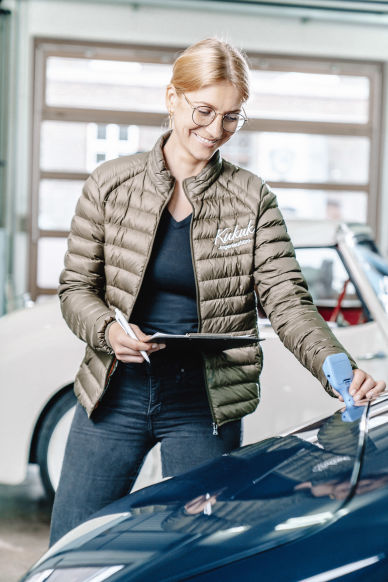

If we move towards the drivetrain, for example, we use oil analysis to check the engine, gearbox and differential and get a full clearance on their condition. We use endoscopy, a kind of camera, to go inside a frame to check for corrosion, or to go inside the engine cylinders to check for damage. If you want to check the frame or the body for corrosion, you have to look inside the sheet metal where you obviously can't see or feel anything with your hand.
Marqued So, it's almost like you're a doctor.
Laura : Since 1989, we have been cooperating with a university specialising in steel and aluminium for tricky cases and are constantly developing our standards. These results, together with wall thickness measurement and weld analysis, allow us to fully authenticate a frame or body for its originality. This allows us to tell you whether this material, whether this frame dates from the 1930s or whether it was made yesterday, which is very advantageous.
They specialise in dating materials like steel and aluminium, and we can do that. I can tell you if this material, if this frame is from the 1930s or if it was made yesterday, which is very advantageous.
Marqued : It's also part of archaeology, like what they do with dinosaurs. That's pretty great.
Laura : It's very interesting, I'm an engineer, so it's interesting to look at the technical parts and combine that with the historical era, the automotive development and the history of the car itself. As a classic car enthusiast and an engineer, it's a perfect combination.
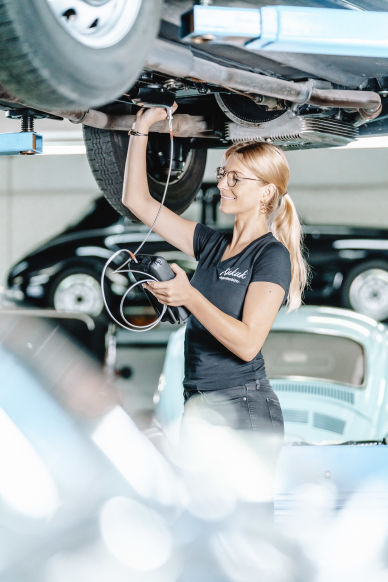
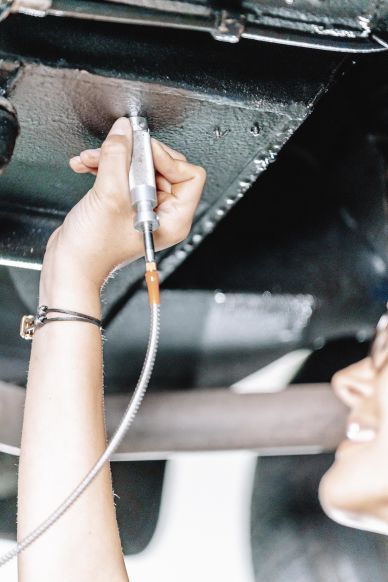
Ah yes, I forgot, we didn't talk about the identity of the car. The stamping on a car, like the chassis number, gives the car its specific identification. There are many methods we use, and it's always a combination of them, but we use the magnetic-optical method specifically for stamped parts. It is very important to analyse such stamping and match it with the manufacturer's delivery information to check whether it is original or re-stamping.
To check all the numbers, I get the delivery note from the manufacturer. Every number is noted there: how the car left the factory, engine number, gearbox number, body number, production number, chassis number, whatever. Everything. And I will check these numbers on the car. That is, by checking, not only visually, not only with the eye, because there can always be something underneath.
Especially with Porsche, most of them are stamped in lacquer. So it could have been sanded off again, the number could have been sanded off and another number stamped on it, for example worst case scenario. You wouldn't see it with your eyes.
Marqued : You go beyond matching numbers. I think at first glance even on a car that is new enough where you think you can be sure of authenticity, but to be absolutely sure is another level of analysis. There's what's on paper, and there's what someone tells you, and then there's what science shows. Everyone can tell a different story.
Laura Yes, exactly. That is the essence. It is what science tells you, because then there is no talking about it. I may find that the science fits your story, but it may not. The best thing for me and of course the car if it also fits, because otherwise it is a futile discussion
Laura : If, for example, the material analysis tells me that this material is from the 60s, but the car is from the 30s and absolutely everything else agrees with the answer from the 30s, I would ask why I am getting a material analysis the 60s. Then of course I would doubt myself or doubt the analysis before I dare to make a negative "statement" about the car. But of course I have to dig deeper to find an answer.
As if we had a car where everything was perfect except for two pipes at the rear and tail. Instead of claiming that they had changed, perhaps due to an accident or something similar, we instead approached the manufacturer and the steel company. The result: the steel manufacturer only changed the steel composition. It wasn't noted anywhere, it was basically changed without the car manufacturer's knowledge. And in the end we found out.
So we didn't say the car is wrong because we said, "Okay, let's give the car some credit and try to find out if there might be another reason for it." And I think that's a very important aspect in the classic car world, we should always go a little bit further to always get the right answer.Because with classic cars, we love them for their history - and they have lived, they have all lived. Just quickly walking around a car and saying "Ah, that's all wrong" or "That's perfectly fine" is the wrong approach. In any case, the car is worth the time and detailed approach, in our opinion.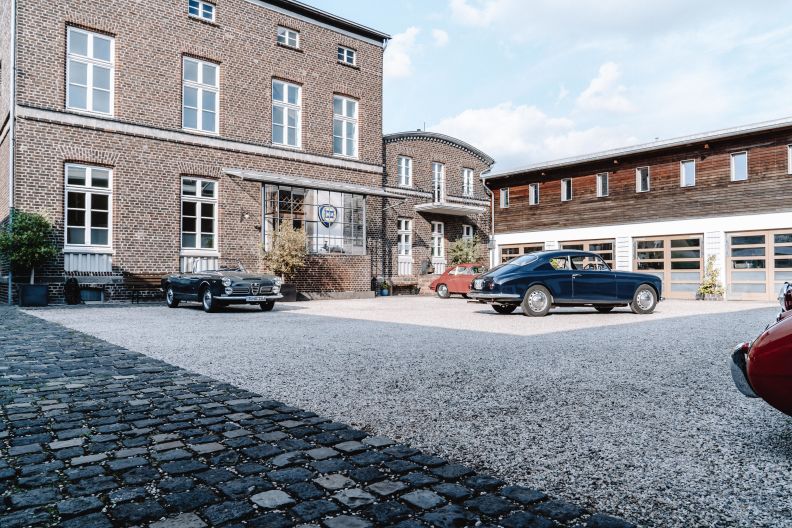
Laura : You know what, reading the history file and researching the car is very important. Often I learn more about the car than I end up learning about the car during the inspection, or it gives me so much information that I already know what to look for.
Marqued : It sounds like you are advising a very sober buying behaviour. Before you get into a car, don't fall in love with it until you have done your homework.
Laura : That's my advice, absolutely. But honestly, I'm terrible at it with my own cars. My Fiat 600 is a project car. I didn't buy it as such a project car, but it is a proper project car. I didn't look at it from 10 feet away when my heart had already fallen in love and nothing else mattered. I am now rebuilding it to the highest standards, it's a long road just because I didn't follow any of my own rules. At the end of the day, of course, we all fall in love. Whether I'm sitting in a 2.7 RS, or a Fiat 600, or a Lancia Fulvia, I'm always smiling.
But I think learning more about a car and the life of the car - it brings out even more passion and more love for that car.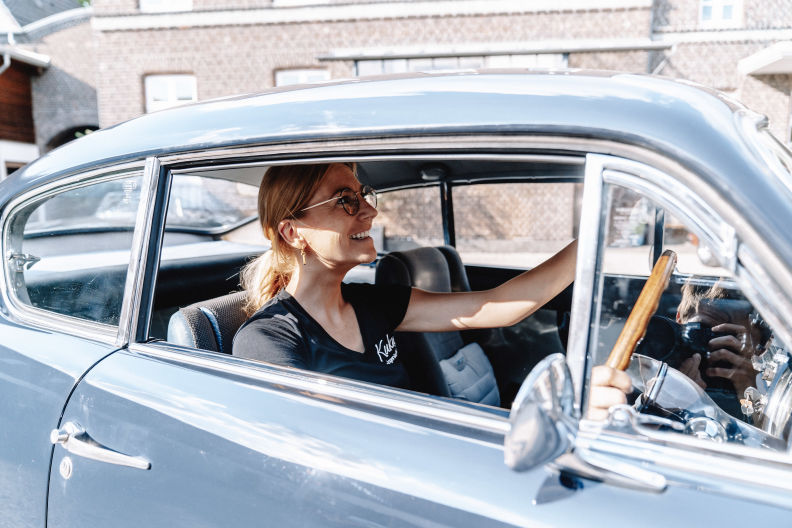
Marqued : It's wonderful that you can have such a professional approach but also a private passion for this stuff. And even you can break your own rules because you are equally a car lover.
Laura : Absolutely. I am a great lover of classic cars - that's how I was brought up. I've never had a modern car. I will never have a modern car. I sometimes drive a modern car, for example when I have to transport a lot of equipment and it's a very long drive, but even to Italy I drive my W201 Baby Benz.
Marked : Beautiful. The passion is there. I think that adds to your credibility in a field that is driven by passion.
Laura Passion is certainly our essence.
Address
Kaldauer Höhe 11-13, 51491 Overath
Call Us
+49 (0) 2206 95 900
Email Us
info@kukuk.com

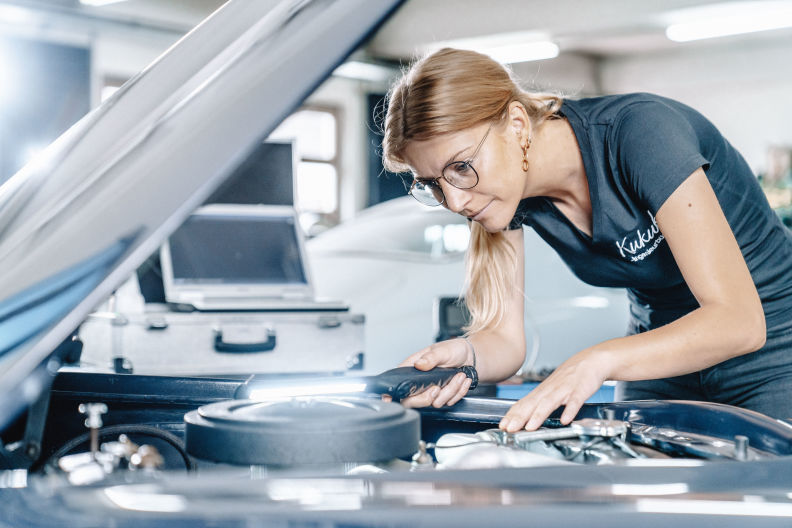

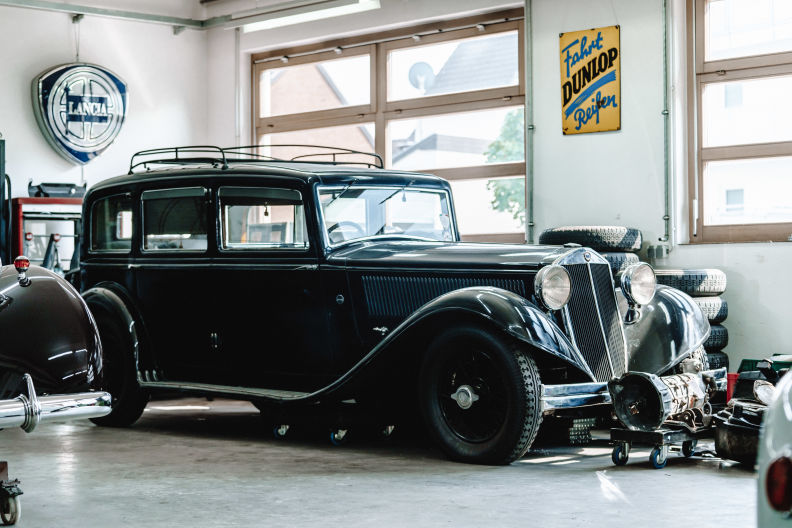
 Photographed by Niclas von Glahn
Photographed by Niclas von Glahn
 Photographed by Niclas von Glahn
Photographed by Niclas von Glahn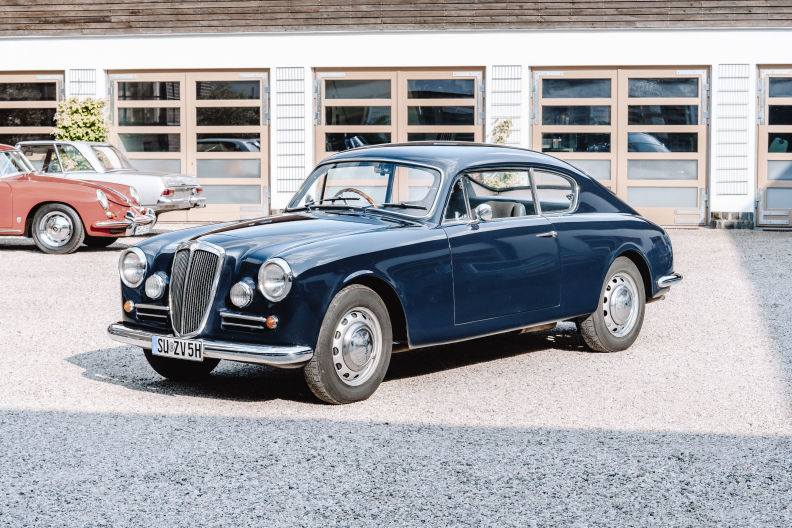
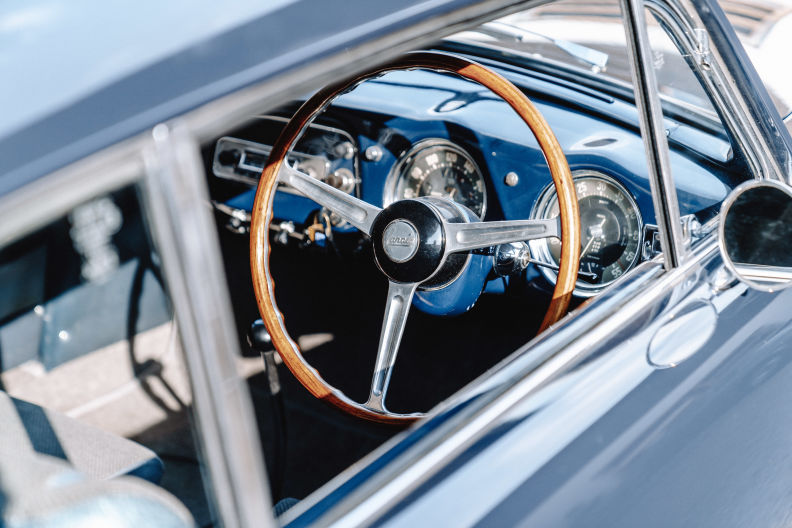 Photographed by Niclas von Glahn
Photographed by Niclas von Glahn